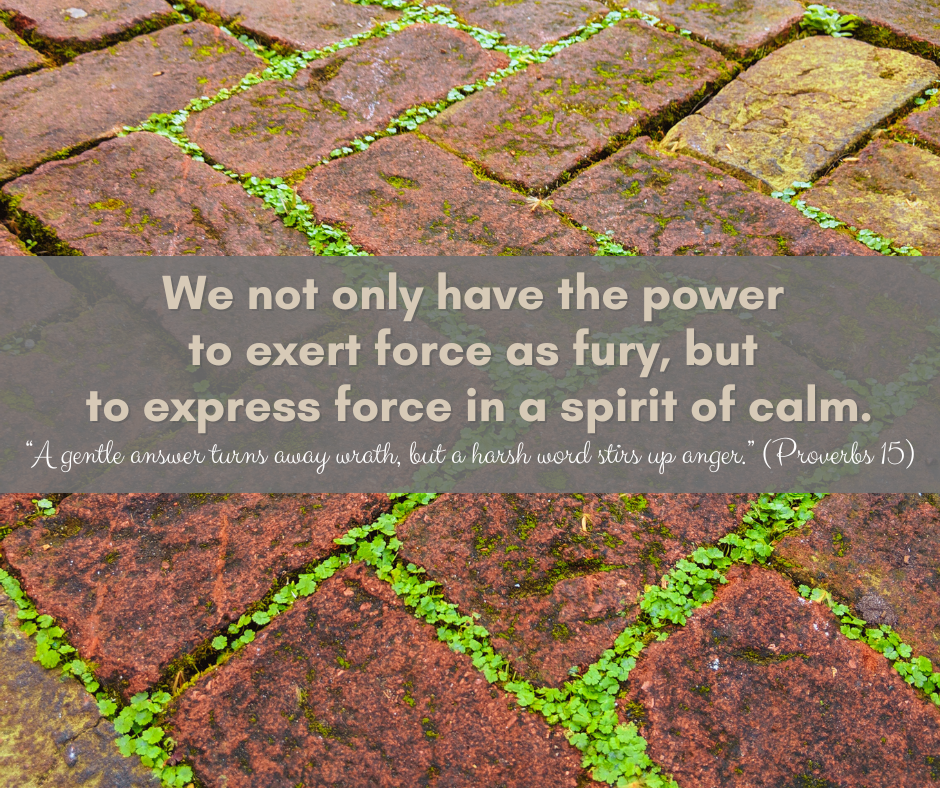It was a lovely weekend morning when we made our way down the brick walk bordering a city street. People filled cafe chairs behind us, and Jeff held my hand as we walked behind a carefree young woman in front of us. Without warning, a disorderly brick disrupted her steps. It sent her dancing like a puppet, spinning. First, she reached wildly towards a tree, then climbed the air back towards the building, while clutching a plastic shopping bag and thrashing it about like a fly swatter. When her twirling and stomping came to a sudden end, she turned her embarrassed face forward and moved on down the street. It only takes one disorderly brick to upset a lovely walk down the street. How do we navigate conversations with others in today’s world?
These are complex times to find peace with others. We still make our way through communication without expecting sudden disruptions to send us reeling. But the world has always been and still is a place where forces beneath the surface push through and into our interactions, upsetting our relationships and stirring up spinning and stomping and all kinds of thrashing. It’s not a good look.
I’ve pondered (let’s not say “over think,” though you can decide for yourself) the nature of communication a lot this year. The rapid pace of change in our world and in many of our cultures has a lot of us reacting to each other with verbal fly swatters. The list of differences and charged topics is long. I’ve had low moments myself—moments I’m not proud of, moments I had to confess and seek forgiveness. I’ve had times when I’ve been the disorderly brick.
These are times when it’s hard to find peace with others in conversations. I haven’t figured it all out, haven’t stopped learning, and haven’t stopped spinning on the sidewalks of life. I have, however, discovered some common characteristics of finding peace with others in conversations.
How to FIND Peace in Conversations with Others
FORCE – Being human is all about force—God’s force on us, our force on creation, our force on each other.
God created us with His power, endowed us with His breath and energy, and unleashed our strength in the world—for good or for bad. Newton’s third law of motion says, “Whenever one body exerts a force on a second body, the first body experiences a force that is equal in magnitude and opposite in direction to the force that it exerts.” One person exerts force, and another person absorbs it.
Have you noticed that the force we use in delivering our message makes a difference in how it’s received? Force isn’t necessarily the same thing as passion, strength, or conviction. Force has a quality of “pushing.”
When the brick threw the woman into a free fall on the sidewalk, the force came from its immovable position and its dense composition. No “give” creates a lot of force. She was literally hurled into an unpredictable, insulting whirling and responding.
We do this when we approach a conversation with an immovable force in our position in relation to another person. How do I know? I’ve felt that force from me, and I’ve felt that force unleashed on me.
Have you felt an unexpected FORCE throw you in a conversation?
Newton may’ve been reading Proverbs 15 when he came up with his third law. “A harsh word stirs up anger,” and “a perverse tongue crushes the spirit,” and “a hot-tempered person stirs up conflict.”
While a strong force has the power to stir up, crush, and create conflict, “a gentle answer turns away wrath,” and “the one who is patient calms a quarrel.” We not only have the power to exert force as fury, but to express force in a spirit of calm. Softness goes a long way on finding peace with others in conversations.

In my pondering, I’ve concluded that forcefulness can feel a little vague. If someone emotionally stumbles away from a conversation—reaching, clutching, or thrashing from the force of it—that’s pretty clear. But force is not always that easy to measure. And as people tend to do more often than not in our times, it can be argued. We live in an age of argument. Who was forceful as in fury, and who was forceful as in calm?
Have you ever tripped on a conversational brick?
I’ve settled on 3 practices to help shape my forcefulness. These three qualities help me be more aware, to keep my bricks where they belong, and to identify when I need to smooth my relational interactions. But that’s enough for one blog post, and as you’ll see when I share the IND of FIND, length matters.
For now, may we be mindful of the FORCE in our conversations and emerging bricks before us.


So very thankful for these timely words, which my heart needed to hear today. Thank you Julie. ❤️